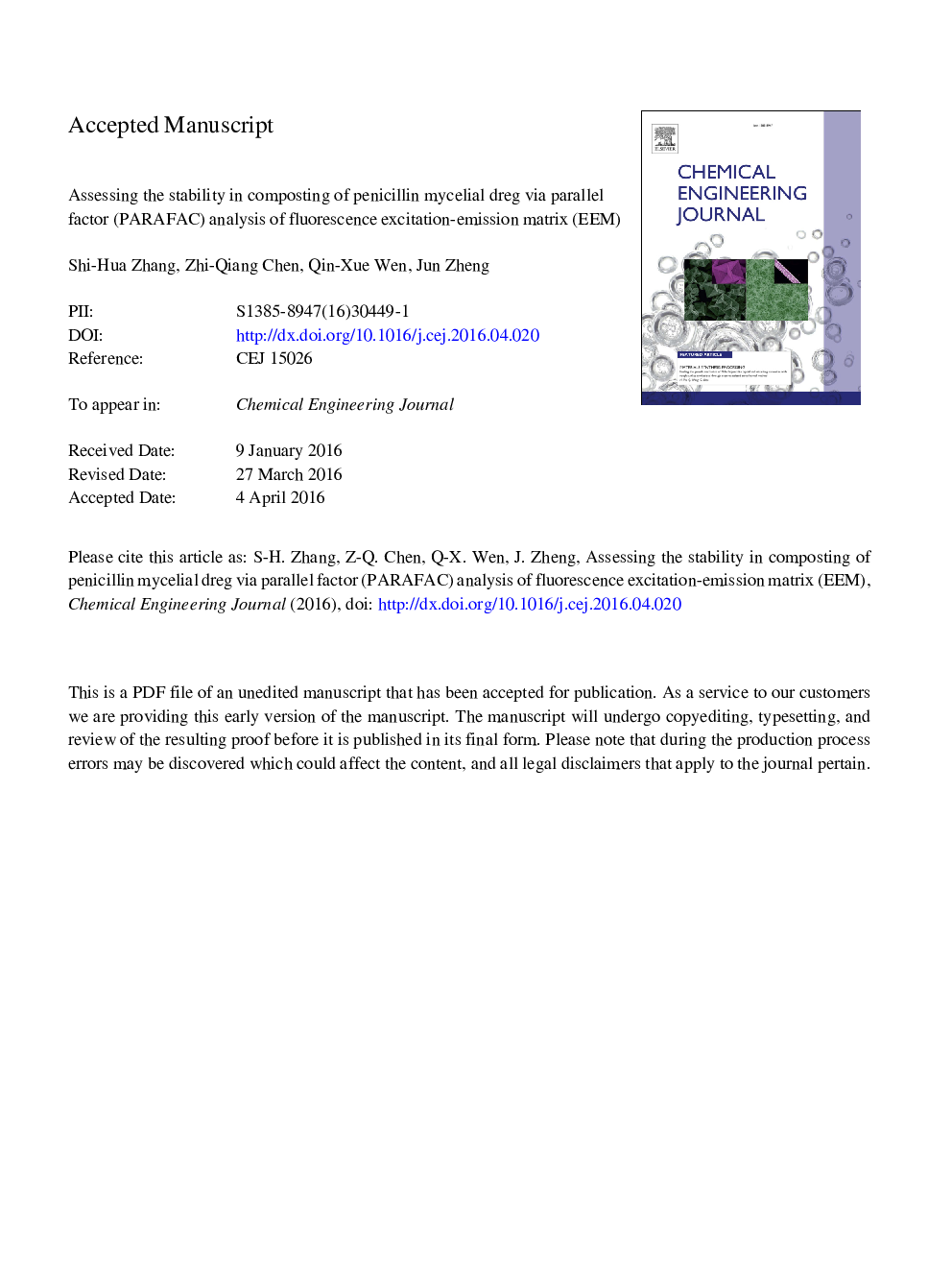| Article ID | Journal | Published Year | Pages | File Type |
|---|---|---|---|---|
| 6581610 | Chemical Engineering Journal | 2016 | 37 Pages |
Abstract
Four composting treatments with different ratios of penicillin mycelial dreg (PMD) to sewage sludge (T-1, 1:0.4; T-2, 1:0.8; T-3, 1:1.2; T-4, 0:1) were investigated to characterize the property and composition of water-extractable organic matter (WEOM) and assess their stabilization via parallel factor analysis (PARAFAC) of fluorescence excitation-emission matrix (EEM). The results show that DOC, DON, DOC/DON ratio and respirometric rate decrease; SUVA254 increase in four treatments. Penicillin degradation occurs mainly in the first 12Â days. A five-component model was obtained, in which three protein-like and two humic-like components were identified. The maximum fluorescence intensity (Fmax) of components is affected by the initial composition of treatments. Furthermore, the relationships between the WEOM parameters and the Fmax of components in T-2 were established using Pearson correlation analysis, indicating that component 3, component 4 and component 5 are the effective parameters in evaluating the stability for composting PMD. To sum up, EEMs-PARAFAC can be proposed to evaluate stability during composting of PMD.
Keywords
WEOMFmaxExcitation–emission matrix (EEM)SUVA254DTNUV254PARAFACEEMDOCPMdParallel factor analysisSourcomponent 3maximum fluorescence intensitySawdustDONDOMSewage sludgeexcitation–emission matrixorganic matterDissolved organic matterWater extractable organic matterSpecific oxygen uptake rateDissolved organic nitrogenCompostingRice strawDissolved organic carbondissolved total nitrogen
Related Topics
Physical Sciences and Engineering
Chemical Engineering
Chemical Engineering (General)
Authors
Shihua Zhang, Zhiqiang Chen, Qinxue Wen, Jun Zheng,
